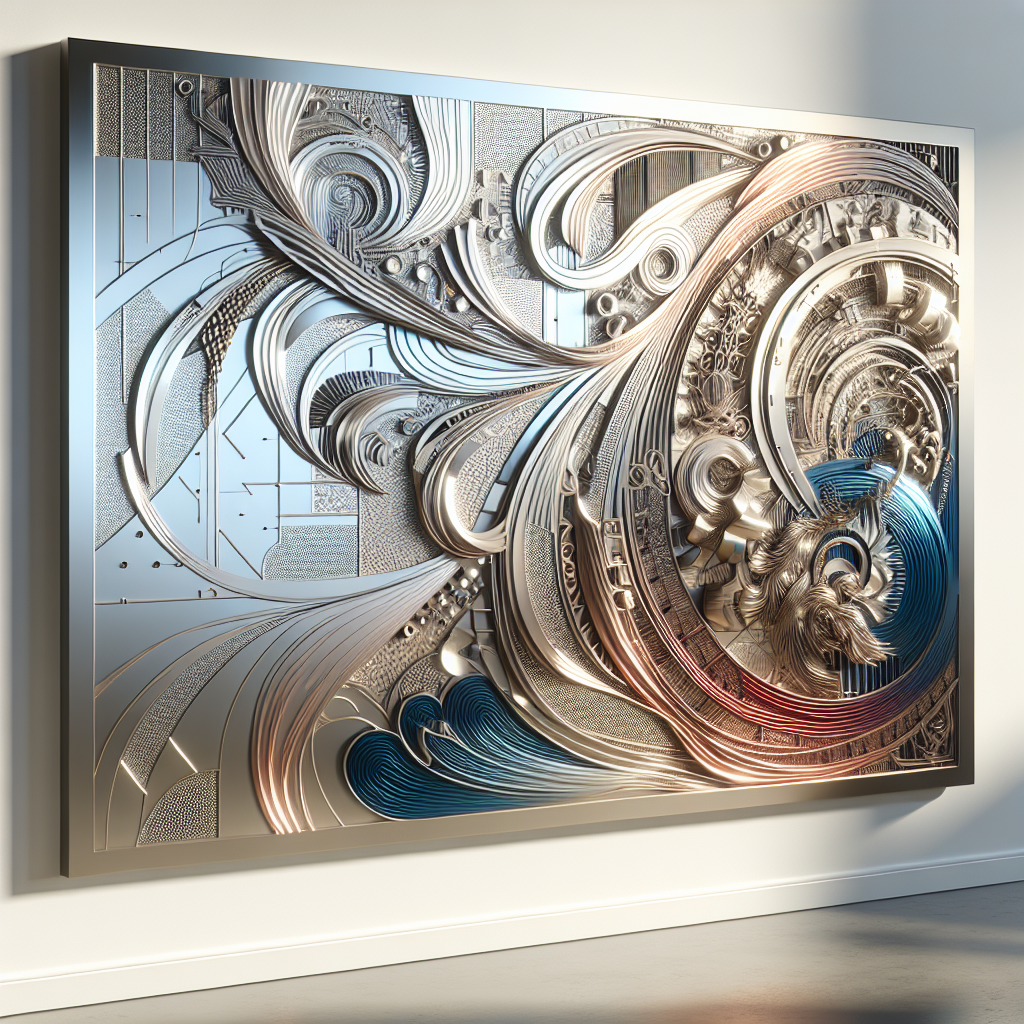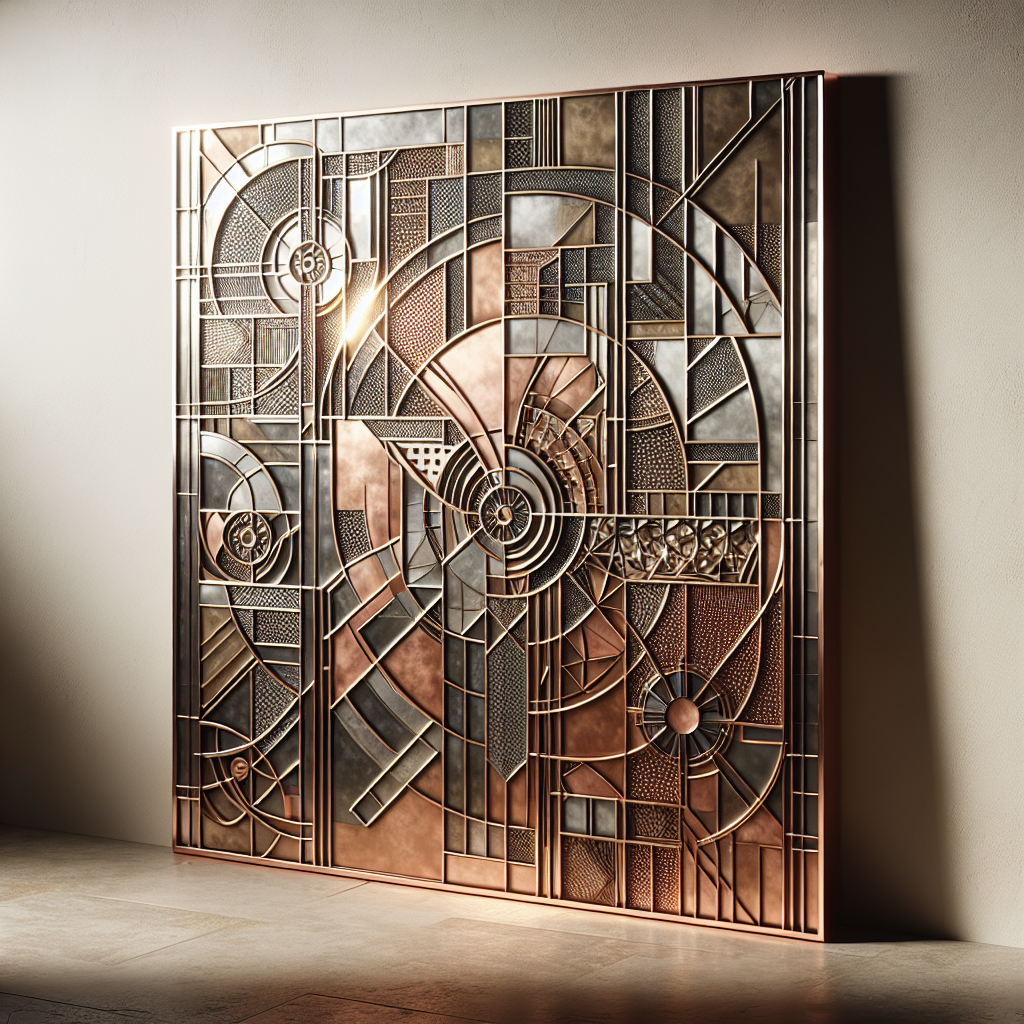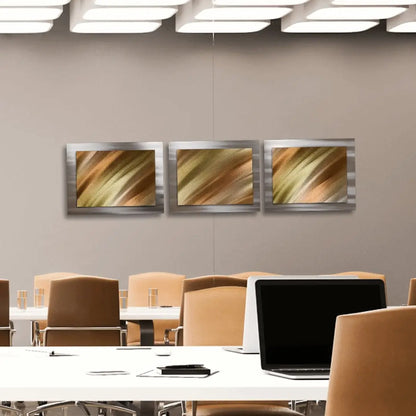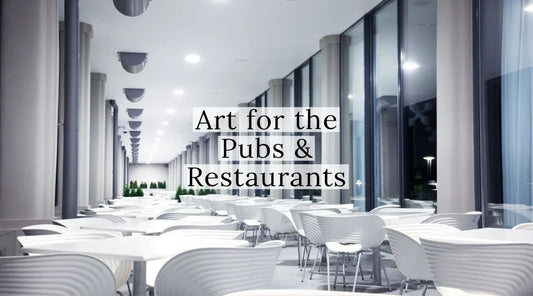Wall art encompasses a variety of forms, each with its own name that reflects its style and creation process. At its core, wall art is any artistic creation that is designed to hang on or otherwise adorn a wall, offering an aesthetic and often emotional dimension to a space. When asking, "what is wall art called?", the answer can range from traditional oil paintings to tapestries, and in the case of Modern Elements Metal Art, extends to intricate metalwork that marries traditional techniques with contemporary designs.
Whether you are a seasoned art collector or a novice eager to explore the world of artistic expression, understanding the basics of wall art is essential. This includes familiarizing oneself with the myriad of terms used to describe different types of wall art. For instance, a 'mural' refers to a large-scale painting directly on a wall, while 'canvas prints' are artworks printed onto canvas material, which are then stretched over a frame. In the modern sphere, 'metal wall art' signifies the use of metals like steel or copper to create pieces that stand out for their textural qualities and durability, elevating the art form to new levels of sophistication.
At Modern Elements Metal Art, enthusiasts can explore handcrafted modern art by metal artist Christopher Henderson, whose work exemplifies the innovative blend of engineering precision and artistic flair. As you delve deeper into the realm of wall art, you'll discover that each type holds its own charm and has the power to transform any room into a dynamic and engaging environment.
Traditional Names for Various Wall Art Forms

Delving into the realm of wall art reveals a rich tapestry of terms that have been used historically to categorize various forms. Traditional wall art forms carry names that have been passed down through generations, each encapsulating a distinct art historical context and technique. For example, 'frescoes' are a type of mural made by applying water-based pigments to freshly laid plaster, a technique dating back to antiquity. 'Tapestries', on the other hand, are woven textiles that often depict complex scenes and were commonly used as decorative and insulating wall hangings in castles and churches.
Paintings have been categorized by the materials used and the style employed. 'Oil paintings' are created using pigments suspended in oil as a medium, known for their richness and depth of color. 'Watercolors' employ a water-soluble medium, offering a translucent quality and delicate finish. In contrast, 'acrylic paintings' use fast-drying acrylic paints, which allow for bold and versatile applications. 'Lithographs', a printmaking technique, and 'etchings', made by using acid to cut into a metal plate, are forms of fine art prints that have been widely appreciated and collected.
Each traditional form of wall art carries its own legacy and continues to influence contemporary art practices. Artists and creators often draw inspiration from these historical techniques, integrating them into modern designs or reinterpreting them with new materials and concepts. As a result, traditional names for wall art forms remain relevant, serving as a bridge between the past and the present in the ever-evolving landscape of artistic expression.
Contemporary Wall Art: Beyond Paintings

Contemporary wall art shatters the confines of traditional canvas, introducing a plethora of innovative forms and mediums that redefine what wall art can be. In this modern era, artists have embraced materials like metal, glass, and even digital media to create compelling pieces that push the boundaries of conventional aesthetics. Metal wall art, particularly, has gained significant traction, offering a fusion of industrial strength and artistic finesity. Sculptural pieces, which can protrude from the wall and play with shadows and light, add a dynamic three-dimensionality to spaces.
Mixed media artworks have also become prevalent, where artists combine various elements such as paper, fabric, and found objects to construct textured, layered compositions. Installation art transforms walls into interactive experiences, often inviting viewers to become part of the art itself. Furthermore, the advent of digital art displays has opened up new horizons, enabling the curation of an ever-changing digital gallery on one's wall.
The contemporary artist's palette is no longer limited to brushes and pigments; it now includes everything from welding torches to digital tablets. This evolution has not only expanded the definition of what is wall art called but has also created a new language of design that speaks directly to the modern connoisseur. With an eye towards the future and a nod to the past, contemporary wall art shapes the narrative of personal and public spaces alike, offering an infinite canvas for creative expression.
Defining Metal Wall Art in Modern Interiors

Metal wall art is a term that encapsulates a wide array of artworks created from metallic materials, which are increasingly popular in modern interior design. This form of art lends itself to versatility and durability, allowing for intricate cuts, bends, and textures that can't be achieved with other materials. It stands out for its ability to incorporate both abstract and realistic elements, offering a distinctive aesthetic that can enhance any room.
Designers and homeowners alike are drawn to metal wall art for its transformative properties. Pieces can range from large-scale installations that act as focal points in a living space to subtle accents that complement the existing decor. The reflective quality of metal adds a play of light and shadow, which can animate a room and change its ambiance throughout the day. Moreover, the material's resilience makes it a practical choice for both indoor and outdoor spaces, resisting the wear and tear that can affect other forms of wall art.
Incorporating metal wall art into modern interiors goes beyond mere decoration; it's about making a statement. Whether it's a sleek and minimalist piece or a complex, textured sculpture, metal artwork can convey a sense of sophistication and cutting-edge style. It resonates with the modern ethos of clean lines and industrial materials, yet it also possesses an enduring quality that ensures it remains a timeless addition to any space. Metal wall art ultimately defines not just the walls it graces, but also the space it inhabits, imbuing it with character and distinction.
The Evolution of Wall Art Terminology

The lexicon of wall art has evolved significantly over time, adapting to the shifts in artistic expression and media. Historically, terms such as frescoes and tapestries dominated the conversation, describing the mural paintings and woven artworks that adorned the walls of ancient and medieval structures. As artistic trends moved forward, the introduction of oil paintings and watercolors brought new terms like canvas and giclée prints into the fold, signaling a shift towards portable and reproducible art forms.
With the advent of the industrial era and the emergence of new materials and techniques, wall art terminology expanded to include works such as lithographs, serigraphs, and screen prints. These methods allowed for greater distribution and accessibility, leading to a democratization of art ownership. The modern and contemporary periods introduced concepts like mixed media, installations, and conceptual art, further broadening the scope of what could be considered wall art.
Today's terminology reflects the diversity and innovation of the current art scene. Phrases like 3D wall sculptures, digital canvases, and interactive installations capture the dynamic nature of contemporary artwork. The term 'wall art' itself has become an all-encompassing phrase that signifies anything from traditional paintings to avant-garde pieces that challenge the very notion of what art can be. As we continue to push the boundaries of creativity, the vocabulary used to describe wall art will undoubtedly continue to grow, capturing the essence of each new wave of artistic exploration.
Choosing the Right Term for Your Wall Art Piece

Choosing the appropriate term to describe your wall art piece can be pivotal in conveying its essence and craftsmanship. Whether you are an artist, collector, or enthusiast, understanding the nuances of art terminology can enhance the appreciation and value of the artwork. For instance, describing a work as a serigraph rather than a mere print can highlight the intricate process of screen printing involved. Similarly, referring to a piece as an installation rather than a decoration suggests an immersive and conceptual experience.
When selecting a term, consider the technique, material, and intent behind the artwork. A metal sculpture emanating from the hands of a skilled engineer-turned-artist, like Christopher Henderson of Modern Elements Metal Art, deserves to be recognized for its unique blend of metallurgy and design. Explore handcrafted modern art by metal artist Christopher Henderson to witness how the right terminology can align with the exquisite nature of a piece, enhancing its narrative and emotional impact.
Art enthusiasts looking to acquire new pieces should also be mindful of these distinctions. Whether you are drawn to the textural depth of a bas-relief or the visual complexity of an abstract metal painting, the terminology you use reflects your understanding and respect for the artistic process. Embrace the rich vocabulary of wall art to express your connection with the work and to share its story with others. And when it comes time to add a statement piece to your collection, remember to explore handcrafted modern art that not only complements your space but also resonates with your personal narrative and aesthetic preferences.






